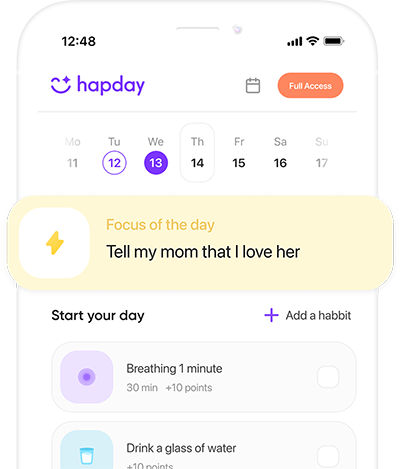Understanding PTSD. You know what? It’s a heavy topic. Yet, we can’t shy away from it because it affects a huge chunk of the world, with around 3.5% of adults in the U.S. grappling with it each year—according to the folks at the National Institute of Mental Health. Whether it’s from military combat, a horrid assault, or Mother Nature’s ruthless side, the origins are varied but painfully real. What’s particularly tricky? The triggers. These pesky things cause intense emotional reactions, making it essential to understand them to reclaim control over one’s life.
Table of Contents
- So, What Exactly Are PTSD Triggers?
- Common Nightmarish Triggers
- The Mental Whirlwind of Triggers
- Pinpoint Your Own Triggers—A Little Self-Sleuthing
- Handling Reactions When Triggers Strike
- Cognitive Behavioral Therapy (CBT)
- Get Mindful, Get Relaxed
- Exposure Therapy
- Support Circles
- Meds, if Needed
- Mapping Out a Management Plan
- Wrapping It Up
So, What Exactly Are PTSD Triggers?
Well, where do I begin? These are basically cues… reminders, if you will, of past traumatic experiences. The reminders don’t have to make sense to anyone else, just to the person affected. They come in all shapes and sizes—sounds, sights, or even a fleeting thought or feeling. The American Psychological Association (good folks) tells us that what nudges one person might not even jab another. Makes it all the more personal, right?
Common Nightmarish Triggers
- Sensory Triggers: Ugh, sensory triggers. Ever hear fireworks and think of something way heavier than a holiday celebration? For some veterans, it’s like hearing gunfire all over again.
- Emotional States: Sometimes just feeling out of control or totally helpless can bring it all rushing back like a tidal wave.
- Physical Locations: Walk into a place that mirrors where the trauma happened? Yeah, that can be a haunting trip down memory lane.
- Anniversaries or Dates: Some days aren’t just days—alas, they are stark reminders.
- News and Media: We all know how a news story can poke at painful memories—uninvited, might I add.
The Mental Whirlwind of Triggers
Stumble across a trigger, and it’s like opening emotional floodgates; anxiety, panic, and even the dreaded flashback. Did you read that thing in the Journal of Anxiety Disorders? Apparently, it’s the body’s defense mechanism kicking in, trying to shield from a threat that’s long gone.
Pinpoint Your Own Triggers—A Little Self-Sleuthing
Being self-aware—sounds easier said than done, right? But it’s key to dealing with PTSD. Here are some tips:
- Jot it Down: Keep a diary. Trust me; you’ll thank yourself whenever you hit that “aha!” moment.
- Ponder Past Bouts: Analyze (but don’t obsess) instances of panic. Patterns may emerge.
- Professional Guidance: Sometimes a seasoned therapist can help shine a light on those elusive triggers.
Handling Reactions When Triggers Strike
Got your triggers mapped out? That’s just one part. Now manage those reactions. Here’s how:
1. Cognitive Behavioral Therapy (CBT)
CBT—honestly a game changer! This therapy can reshape negative thoughts that lurk every time a trigger surfaces. According to the American Journal of Psychiatry, it’s excellent at squashing PTSD symptoms.
2. Get Mindful, Get Relaxed
Ever tried mindfulness, like yoga or meditation? This isn’t just trendy pop wisdom. Journal of Traumatic Stress says it actually chills those PTSD symptoms by anchoring you in the present.
3. Exposure Therapy
Exposing oneself to triggers in a controlled space, over time, dulls their sting—an unusual but effective tactic.
4. Support Circles
And then there’s the unbeatable network of friends or support groups. Knowing someone else gets it is invaluable.
5. Meds, if Needed
Sometimes, despite best efforts, medication has to play a role. A kind-hearted doc can help figure that part out.
Mapping Out a Management Plan
Plan your route to control! Here’s an idea of how:
- Understand Your Triggers: Pour out every ugly detail.
- Pair Triggers and Coping Methods: Different strokes for different folks!
- Set Small, Attainable Goals: Slow and steady wins the race.
- Continually Reassess and Adjust: Life’s dynamic. So should your approach be.
Wrapping It Up
Life with PTSD is a journey—challenging, but not insurmountable. With some understanding and strategy, those pesky triggers lose their menacing edge. Therapy, mindfulness, or simply leaning on others… There are options for every mood, every moment. Got PTSD haunting your or someone dear’s doorstep? It could be time to ring up a mental health expert. Ready to take control of your mental journey? Head over to Hapday for helpful tools and resources to aid in managing PTSD. Start your journey today!
In your corner: National Institute of Mental Health, American Psychology Association, Journal of Anxiety Disorders, American Journal of Psychiatry, Journal of Traumatic Stress.

